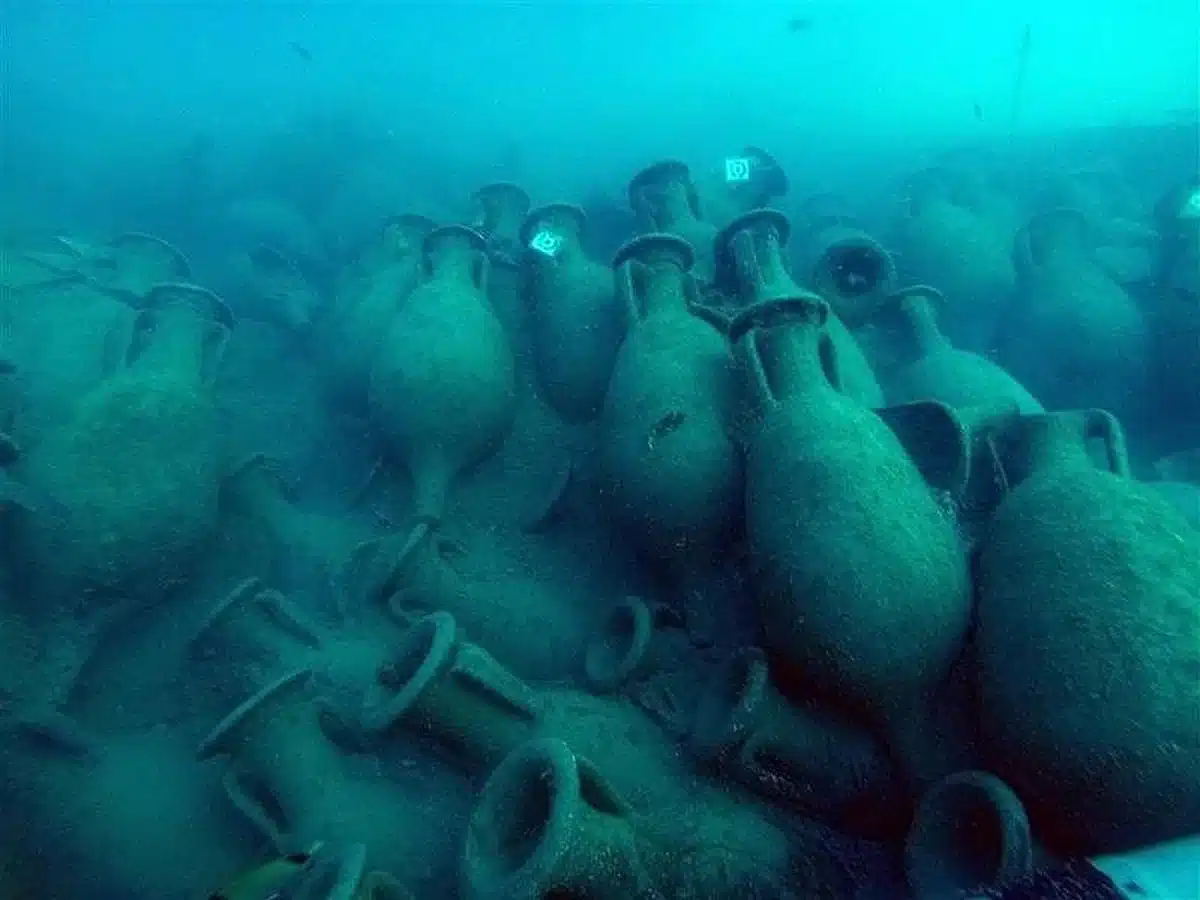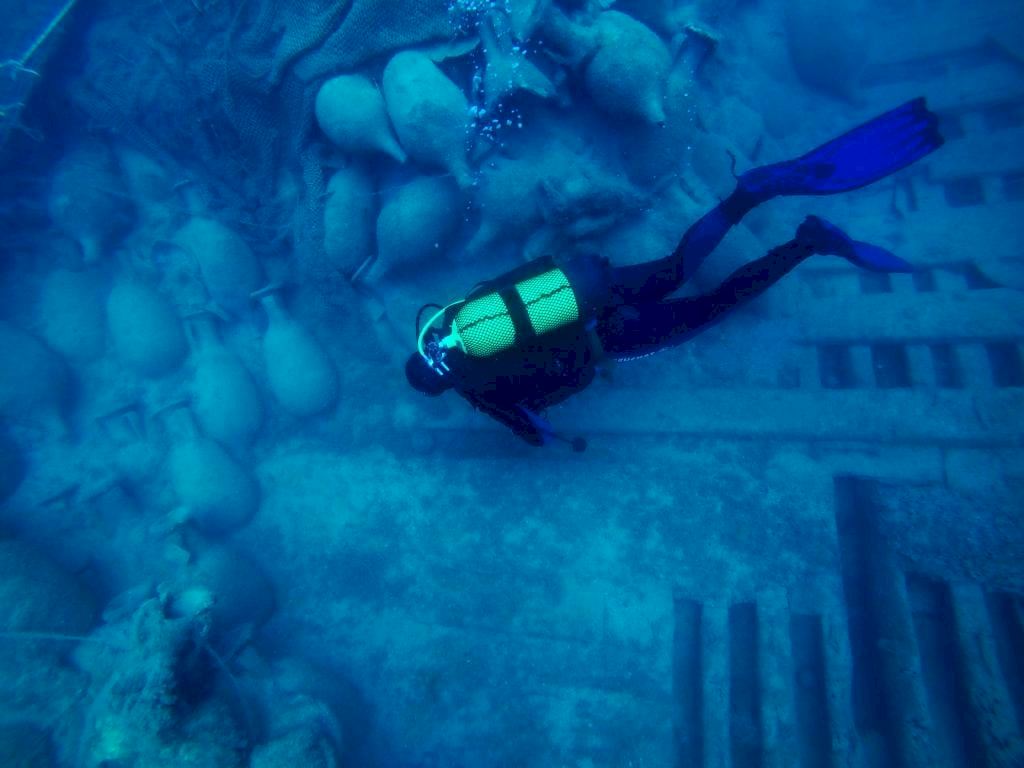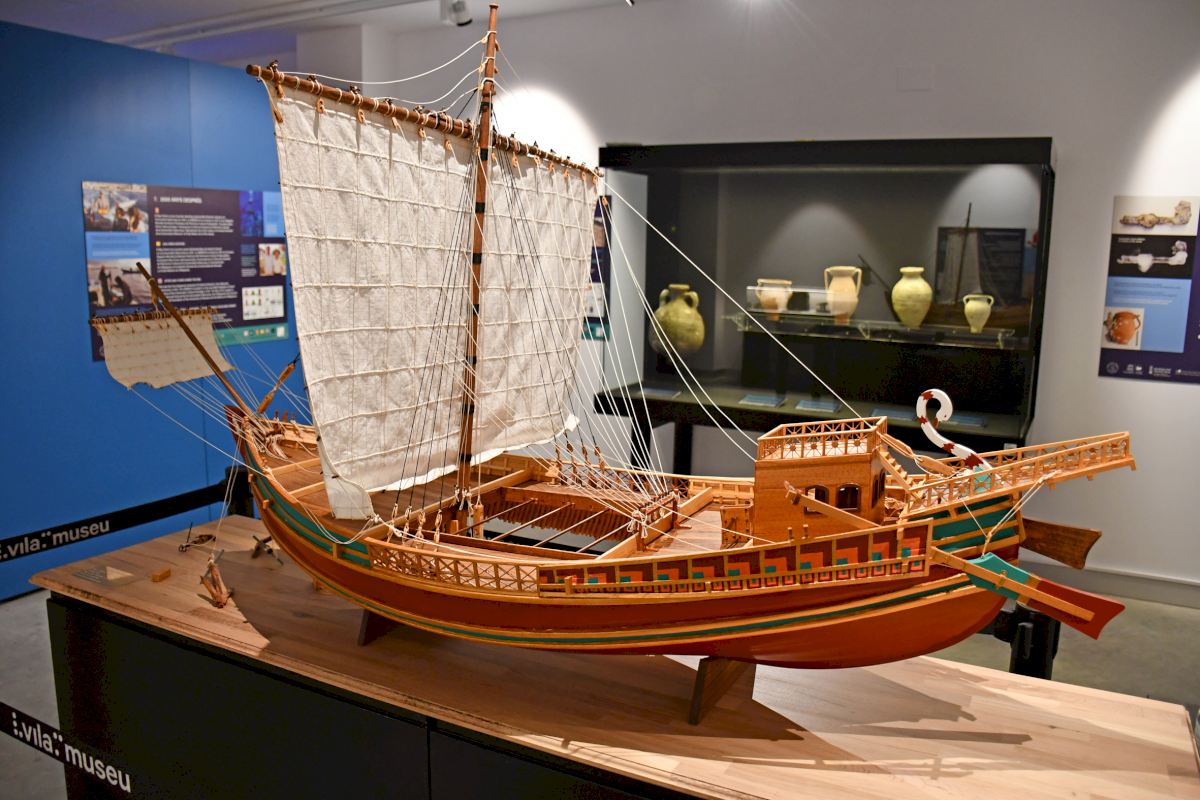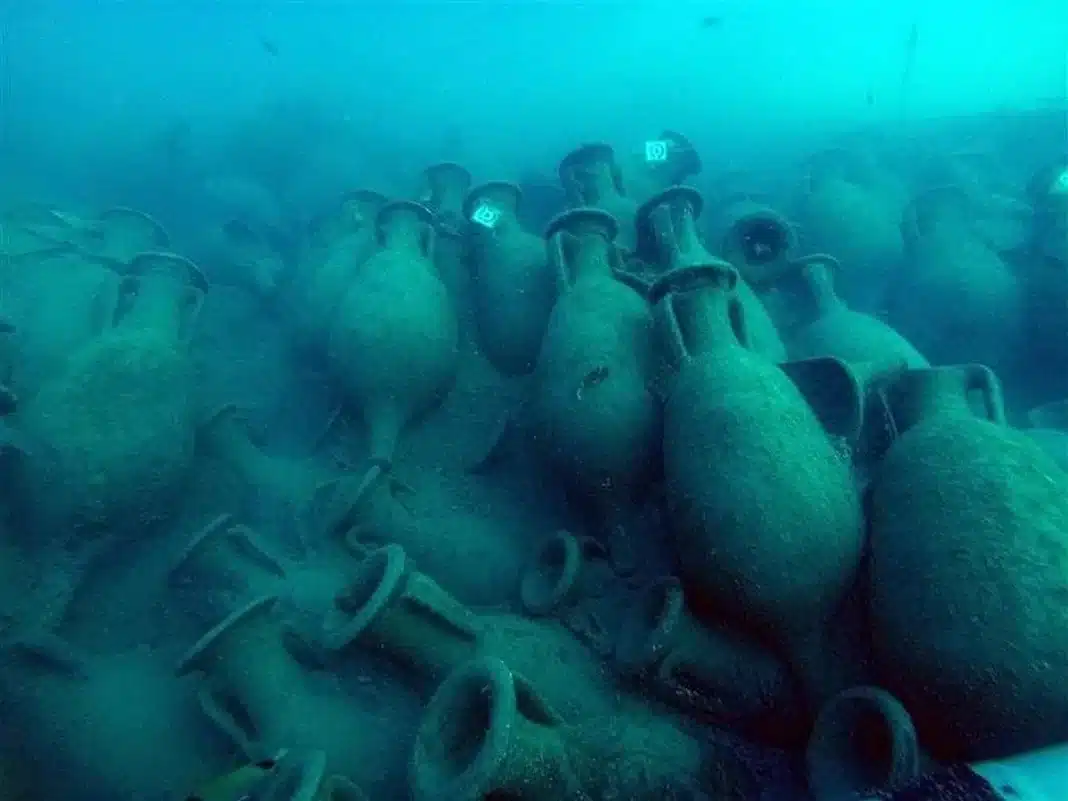The Bou Ferrer is a submerged Roman ship can be found at a depth of 25 metres that sank about a kilometre from the shoreline of La Vila Joiosa, and which dates back to the first century A.D.
The boat was on the Cádiz – Rome route and on its last trip it was loaded with more than 3,000 amphoras containing fish sauce, together with lead ingots from Sierra Morena
The ship was probably on its way from southern Spain to Italy when it was hit by a squall, but as it tried to find shelter on the shore, it sank before it could reach shelter.
The wreck of the Bou Ferrer is a ship whose naval structure has no similarities to any other and the fact that there isn’t any other ship from that era to be found at a depth that allows it to be studied, makes it one of the most exceptional cases of sunken ships in Spain.
Underwater excavations have revealed that it is a large and ancient commercial ship of approximately 30 metres in length and 9 metres in beam that was carrying a load of more than 230 tons, which makes the Bou Ferrer the largest ancient wreck of its kind that It is currently in the process of excavation.
The visits to the underwater archaeological site are unique, as they offer divers the chance to observe the works of an archaeological site on the largest shipwreck of a Roman ship in the Mediterranean, dated between AD 64 and 68.
Bou Ferrer’s main cargo was 3,000 handmade amphoras from the Puerto Real de Cádiz and pure lead ingots that were to be used to rebuild the water pipes in Rome after the burning of the city in AD 64. Each amphora carried about 40 litres of “garum”, a sauce made of spices and fish, from the Roman city of Bética.
The amphoras, situated in the vessel’s cellar, were protected by grapevine canes (due to the voyage being difficult and the need for the merchandise to arrive in good condition). Similarly, on both sides of the false keel (a section of the ship that serves to strengthen the keel and stabilise the ship) they found 12 ingots, each one weighing 64 kilos (exceptional size) minted with the symbol of the Julio-Claudia dynasty (formed by the first five related emperors to Julius Caesar: Augusto, Tiberio, Calígula and Nero) so, the wreck is dated in the 1st century A.D. and specifically attributed to the era of Nero due to the dating of the amphorae and other relics.
According to researchers, the ship set sail from a port in or around the Cadiz area, in the direction of Rome or Narbonne (a then Roman colony). They say, that close to the Balearic Islands, the ship ran into difficulties and during a salvage attempt, the ship maneuvered towards the coast, but was unable to reach it and sank just a few metres from the coastline, becoming sumberged in the waters of Villajoyosa where is has laid for around 2000 years.
Since 2017, it has been part of the new UNESCO Register of Best Practices for Submerged Cultural Heritage, for being an example of protection, research and dissemination. During the excavation campaigns, guided tours for sport diving are offered, always accompanied by project technicians.








